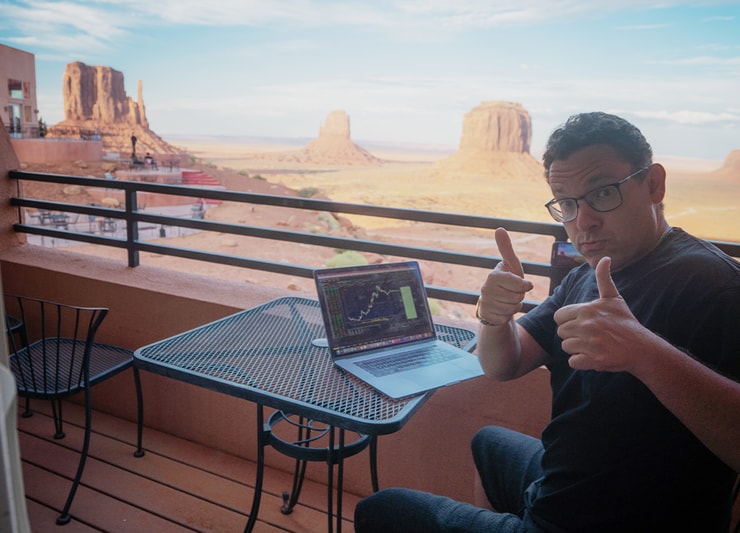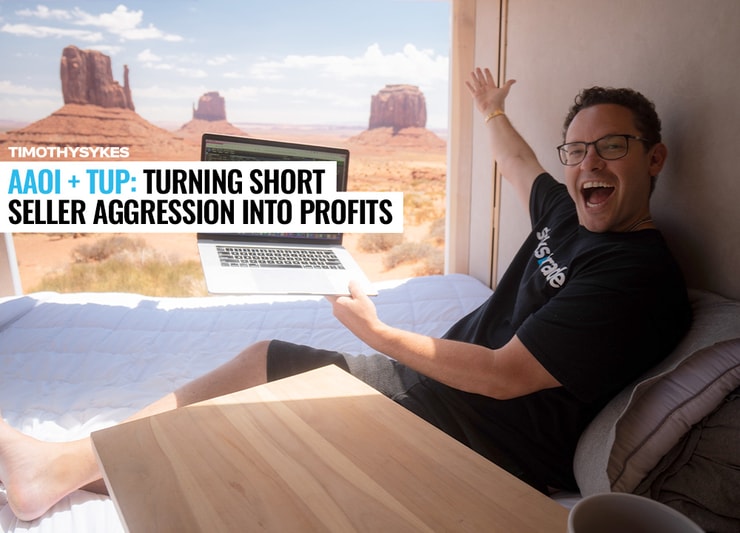I’ve been saying it for a while now…
The market is overextended.
Normally that would make me extremely cautious.
But it hasn’t yet.
Why?
Overaggressive short sellers creating one opportunity after another.
And with their help, I was able to nail two trades on Friday in the tickers AAOI and TUP.
Of course, I love poking fun at how miserable of an existence these short sellers live…
But on the other hand, I appreciate their complete and utter disregard for risk management and boneheaded decision making because they are helping me rack up more profits for me to donate to charity.
Here’s why you need to pay attention to short sellers and how I use them to siphon profits off them.
Table of Contents
The Dual Faces of Short Sellers

2025 Millionaire Media, LLCShort sellers often portray themselves as heroes, exposing the flaws in companies, and saving investors from bad decisions.
However, trader’s they seem to forget one key variable: Trading is not the same thing as investing.
As a trader you must take risk management into consideration, rely less on the fundamentals and more so on the price action.
Short sellers argue they are doing the world a favor…
But their jaded view on the world…and more so…their over aggressive trading behavior is what’s fueling some of the best squeezes in the market right now.
Confessions of A Former Short Seller

2025 Millionaire Media, LLCBack in the day I used to focus mainly on shorting pump and dumps.
At the time it was a rather unique strategy.
Short selling was once reserved for professional traders…but with my growing popularity I made it sort of mainstream.
And that’s where I messed up.
You see, so many traders started short selling crappy companies and it made the strategy harder to trade.
In fact, the risk vs. reward skewed and it no longer made sense for me to trade it.
I evolved.
But so many traders haven’t.
Just look at some of the squeezes we’ve seen lately:
MF: +300%
AAOI: +63%
TUP: +44%
And that was just last Friday!
By the way, I love trolling them because I want them to unravel and trade on tilt.
Their reckless decision making is what’s helping me have some of my best trading of the year.
More Breaking News
- Northern Dynasty Minerals Stock Rises on Positive EPA Settlement News
- GRAB’s Unexpected Surge: Will It Last?
- Invest or Ignore? The Top Penny Stocks Ahead of Tariff Deadline
LOL.
Behind My Trades: A Glimpse Into AAOI and TUP

2025 Millionaire Media, LLCMy recent trades on AAOI and TUP perfectly illustrate how understanding short sellers’ aggression can lead to profits.
For example, TUP traded as high as $7.25 in the after hours on Thursday.
But I waited for a dip on Friday to get in.
I got in at around $5.08 when I saw there was panic selling off the highs.
I was able to exit cleanly at $5.26.
Which was the right move because the stock did get to the $4.60s.
I like quick hitters when I’m trading super volatile stocks.
In addition, if I have a better read on a play, I won’t hesitate to get back in at a later time or what I think a better price is.
Heck, I traded TUP several times last week waiting during panic sell offs and bought the dip.
Each sell-off traps the shorts and puts them in an even worse position…how else do you explain a stock that goes from $0.61 to $7.25 in just a few trading days?
AAOI is another symbol I have been trading a lot lately.
It has gone from $5.86 to a high of $11.29 in a few trading days.
I love the chart on this multi-day runner, and like TUP, I’ve tried to buy on weakness.
Last Friday I saw an opportunity to get in when it was trading $1 off its highs, getting in at $10.33 and out at $10.49.
That’s what I call trading like a sniper.
I’m not one of those traders who picks tops or bottoms. Heck, sometimes I don’t even catch the meat of the move.
But if you’re patient, you can have some great success if you focus on risk management.
I know, because I’ve made nearly $7.5 million in trading profits by using this style.
And like I said earlier, if I get a better read on a play, I won’t hesitate to get back into a stock.
What’s Your Next Move?

2025 Millionaire Media, LLCI’ve helped so many of my students take it to the next level. If you’re hungry, disciplined, and understand that mastering trading isn’t a sprint but a marathon, I want you to talk to someone from my team to see if you’re a fit for my program.
It doesn’t cost you a thing…and who knows…it might be life changing.
Still undecided about this trading thing?
I get it, maybe you need to see more before making a commitment. Because, I’m not going to lie, it is a commitment.
If that’s you then I invite you to check out these free alerts my team puts together.
What better way to learn than from successful traders.
Click here for more information.








Leave a reply